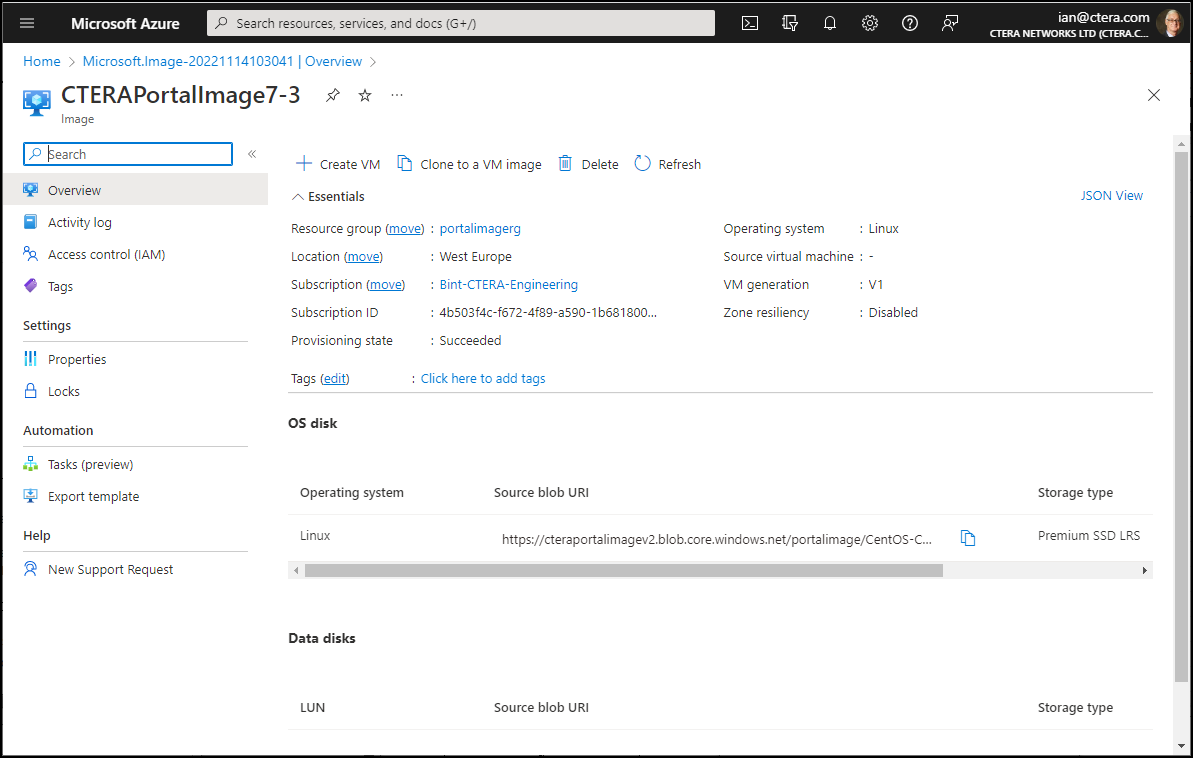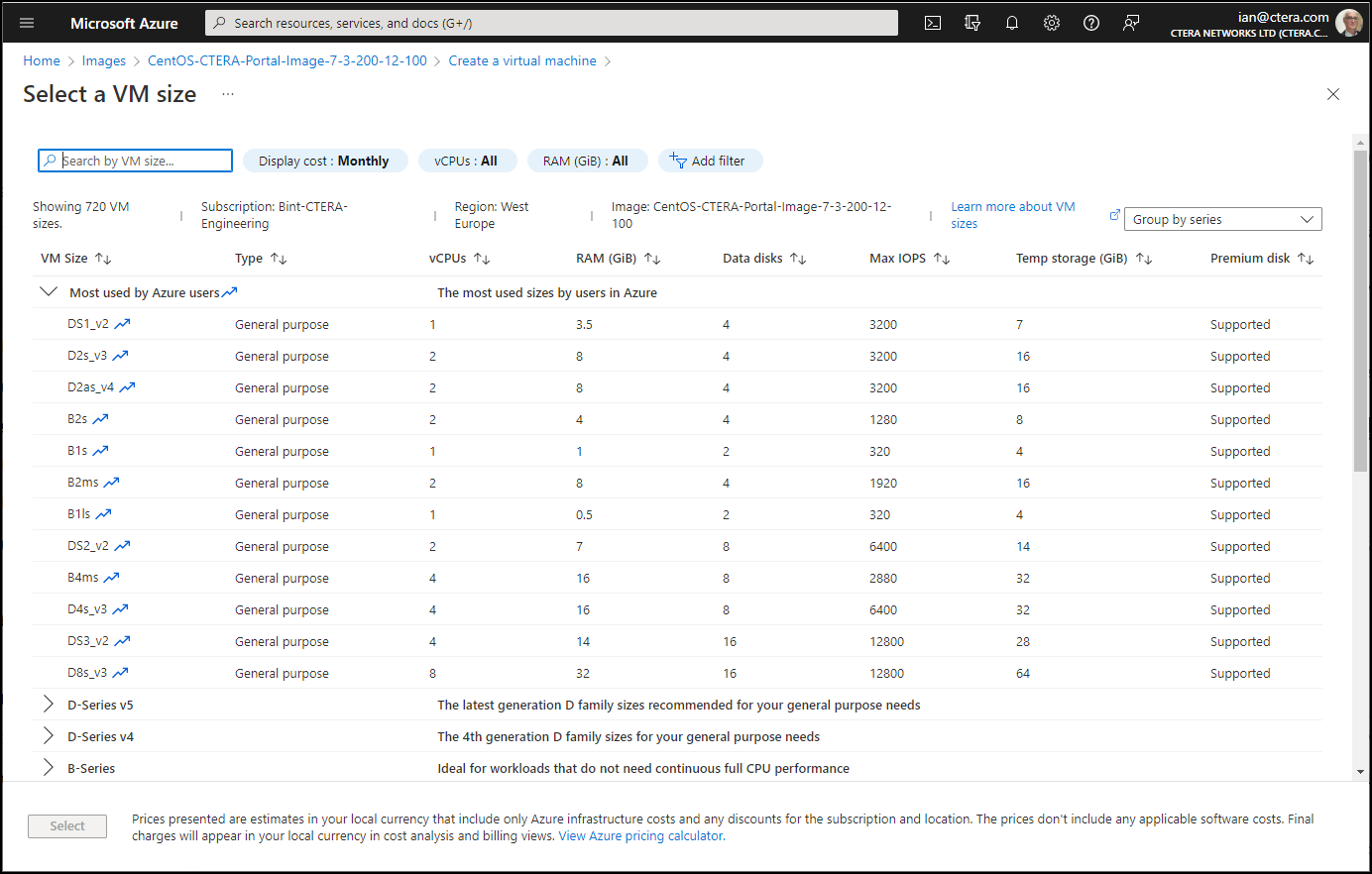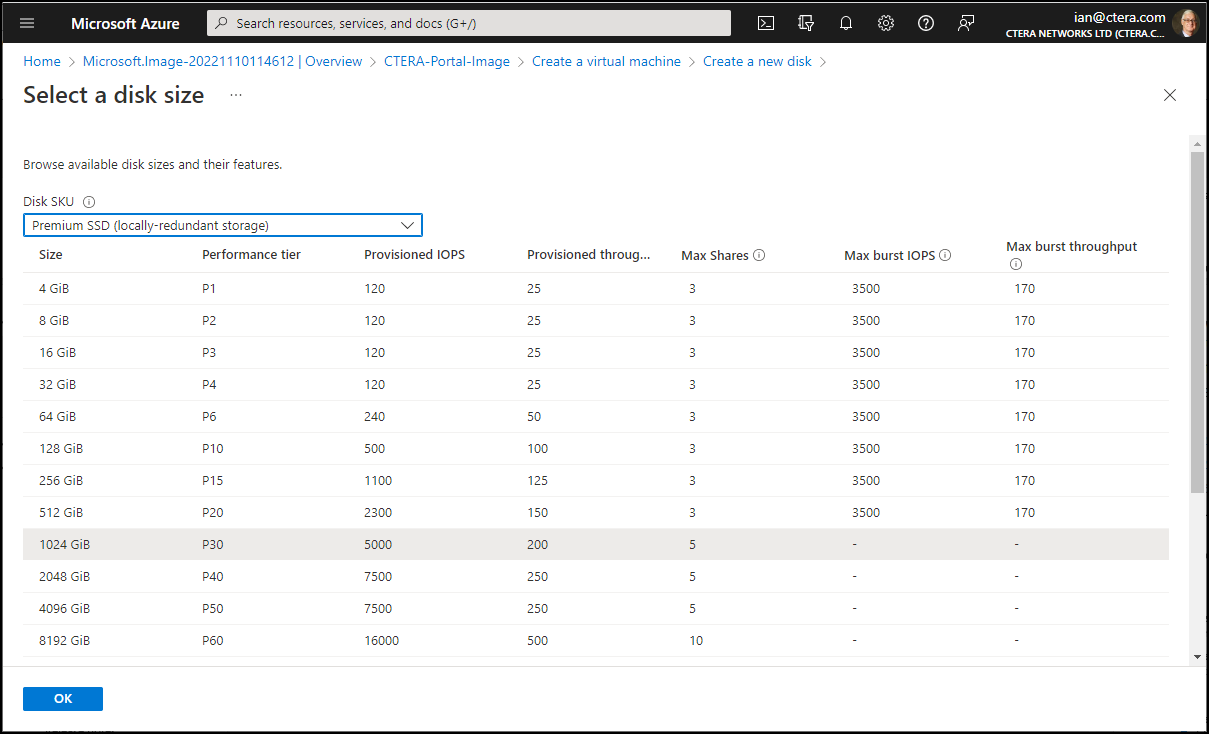- 5 Minutes to read
- Print
- DarkLight
- PDF
Installing CTERA Portal Instances
- 5 Minutes to read
- Print
- DarkLight
- PDF
Use the following workflow to install CTERA Portal.
- Creating a Portal Instance.
- For the primary database server and secondary, replication, server Logging in to the Server to Create the Storage
- Optionally, configure a default gateway.
- For the first server you install, follow the steps in Configuring the Primary Server.
- For any additional servers beside the primary server, install the server as described below and configure it as an additional server, as described in Installing and Configuring Additional CTERA Portal Servers.
- Make sure that you replicate the database, as described in Configuring the CTERA Portal Database for Backup.
- Backup the server as described in Backing Up the CTERA Portal Servers and Storage.
Creating a Portal Instance
For the primary database server and secondary, replication, server, the portal instance is created with a fixed size data pool. If you require a larger data pool, which should be approximately 1% of the expected global file system size, you can extend the data pool as described in Azure Specific Management.
To create a portal instance:
Log in to your Azure portal and access the Images service.
The list of available images is displayed.Select the CTERA Portal image created in Creating a Portal Image.
The image details are displayed.

Click Create VM.
The Create a virtual machine page is displayed.

Resource group – The resource group to be used. The resource group used to create the image is the default group. The resource group must use premium storage.
Virtual machine name – A name to uniquely identify the virtual machine.
Region – The region to host the virtual machine.
Size – Click See all sizes to display the available VM sizes.
The Select a VM size page is displayed.

- Select a VM size that matches your requirements.
The VM size depends on the type of server you want. For details, see Requirements - Click Select.
Authentication type – Choose Password.
Username – A name to access the virtual machine. This is an administrator name to access the portal for initial configuration.NoteOnce the virtual machine has been fully configured, CTERA provides a user name and password, but this user name can also be used.
Password – Enter a password to access the instance.
Confirm password – Reenter the password.
Select inbound rules – Select HTTP (80) and HTTPS (443) from the drop-down list.
Licensing type – Select Other.
Leave the other values with their defaults.- Select a VM size that matches your requirements.
Click the Disks tab or Next: Disks.

Click Create and attach a new disk to create the data pool disk.
The Create a new disk page is displayed.

- Click Change size.
The Select a disk size page is displayed.

- Under Custom disk size (GiB) enter the data pool disk size and a high Performance tier.
See Requirements for disk sizing. Prior to going to production, contact CTERA Support to evaluate whether the attached drive's performance meets CTERA's performance requirements. - Click OK.
- Click Change size.
For the primary CTERA Portal database server and the secondary, replication, server, click Create and attach a new disk to create the disk for archive storage.
NoteFor all other servers, application and preview, you do not need to add an archive pool disk. CTERA recommends adding archive storage on both the primary and secondary database servers.
- Click Change size.
The Select a disk size page is displayed.

- Change
Premium SSD (locally-redundant storage)toStandard HDDin the drop-down box. - Under Custom disk size (GiB) enter the archive pool disk size.
See Requirements for disk sizing. Prior to going to production, contact CTERA Support to evaluate whether the attached drive's performance meets CTERA's performance requirements.NoteThe minimum archive pool should be 200GB but it should be sized around 2% of the expected global file system size.
- Click OK.
- Click Change size.
Click OK.
Change Host Caching for the disk to
Read/writefor the added disks.Click Review + create.
NoteIf validation does not pass, click Review + create again.
Review the virtual machine details and click Create.
The machine is deployed and started automatically.

Click Go to resource to display its details.
The virtual machine includes the OS disk which is used for root, and a data disk, which is used to store the CTERA Portal database.NoteNote the Public IP address. You access the server using this address. When connecting to the server using SSH for the first time, use the
rootuser andctera321password. You are prompted to change the password.Click Networking under Settings in the navigation menu to add inbound and outbound port rules.
In the Inbound port rules tab, click Add inbound port rule.
The Add inbound security rule window is displayed.Click Add inbound port rule to add the following inbound port rules, incrementing the Priority for each rule by ‘10‘ and clicking Add after adding each rule:
Service Destination port ranges Protocol Priority Name Notes Custom 995 TCP 330 CTTP DNS (UDP) — — 340 DNS PostgreSQL — — 350 This port does not need to be accessible from the Internet. Custom 18682 TCP 360 Preview This port does not need to be accessible from the Internet. Select the Outbound port rules tab and click Add outbound port rule.
The Add outbound security rule window is displayed.Add the following ports.
NoteYou need to change the Name field, if it was used for the inbound port.
Service Destination port ranges Protocol Priority Name Notes DNS (UDP) — — 100 DNS1 HTTP — — 110 HTTP1 HTTPS — — 120 HTTPS1 Custom 18682 TCP 130 Preview1 This port does not need to be accessible from the Internet. Custom 111 TCP 140 NFS Custom 123 TCP 150 NTP SMTP — — 160 SMTP 25 is the default SMTP port. You can define a custom port for a port used in your environment. For the primary database server and the secondary, replication, servers, continue with Logging in to the Server to Create the Storage.
Logging in to the Server to Create the Storage
Create the archive pool on the primary database server and when PostgreSQL streaming replication is required, also create an archive pool on the secondary, replication, server. See Using PostgreSQL Streaming Replication for details about PostgreSQL streaming replication.
To log in to the CTERA Portal server:
- Log in as
root, using SSH or through the console.
The default password isctera321
You are prompted to change the password on your first login.
To create the data and archive pools:
- Log in as
root, using SSH or through the console. - Run
fdisk -lto identify the disk to use for the data pool and archive pool. - Run the following command to create the data pool:
portal-storage-util.sh create_storage Device
where Device is the Device name of the disk to use for the data pool.
For example:portal-storage-util.sh create_xfs_storage sdc - Run the following command to create the archive pool:
portal-storage-util.sh create_db_archive_pool Device
Where Device is the Device name of the disk to use for the archive pool.
For example:portal-storage-util.sh create_db_archive_pool sdd - Start CTERA Portal services, by running the following command:
portal-manage.sh start








